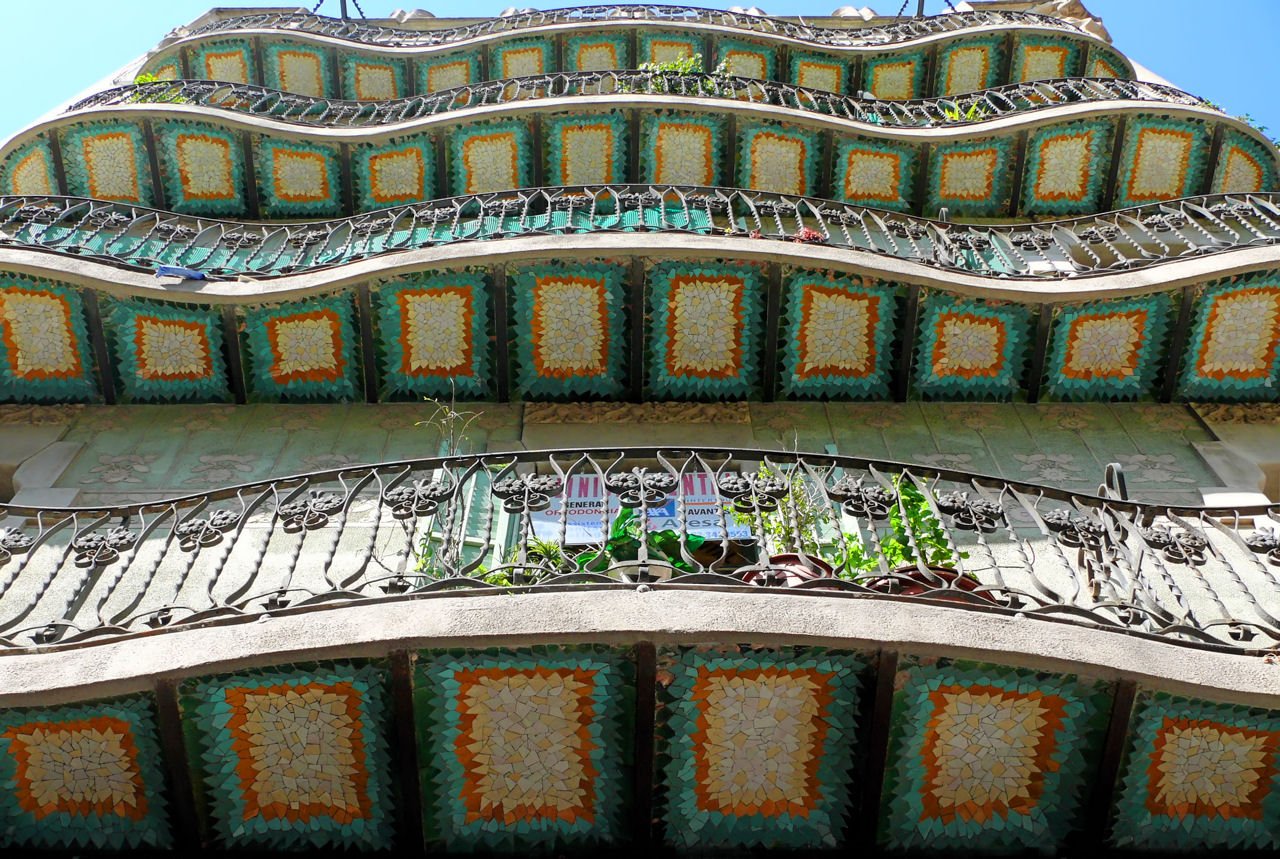#1185. Undulating Mosaic Façade in Catalan Modernist Style
The image showcases a magnificent example of Art Nouveau architecture, characteristic of Antonio Gaudí's work or his followers. The building's façade demonstrates an undulating structure with smooth organic lines that create a sense of movement and fluidity, which is a distinctive feature of Catalan Modernism.
Particular attention is drawn to the decorative mosaic covering the façade. It is executed in the trencadís technique – a mosaic method typical of Barcelona that uses broken ceramic tiles. The mosaic pattern consists of squares with turquoise and orange borders, creating a vibrant visual rhythm throughout the façade. The light-colored central field of each square contrasts with the rich colored framing, emphasizing the geometry of the pattern.
The building's balconies feature elegant wrought iron railings with organic motifs characteristic of Art Nouveau. Their wavy forms repeat the overall plasticity of the façade, creating a unified artistic ensemble. On one of the balconies, potted plants are visible, which is a traditional element of Barcelona balconies and gives the building a lived-in, inhabited character.
Architectural rhythm is created by the repetition of wavy lines of cornices and balconies that extend along the entire façade, giving the building dynamism and expressiveness. This play of undulating forms, contrasting with the precise geometry of mosaic squares, is a brilliant example of the artistic language of Catalan Modernism, where organic forms are combined with decorative richness.
